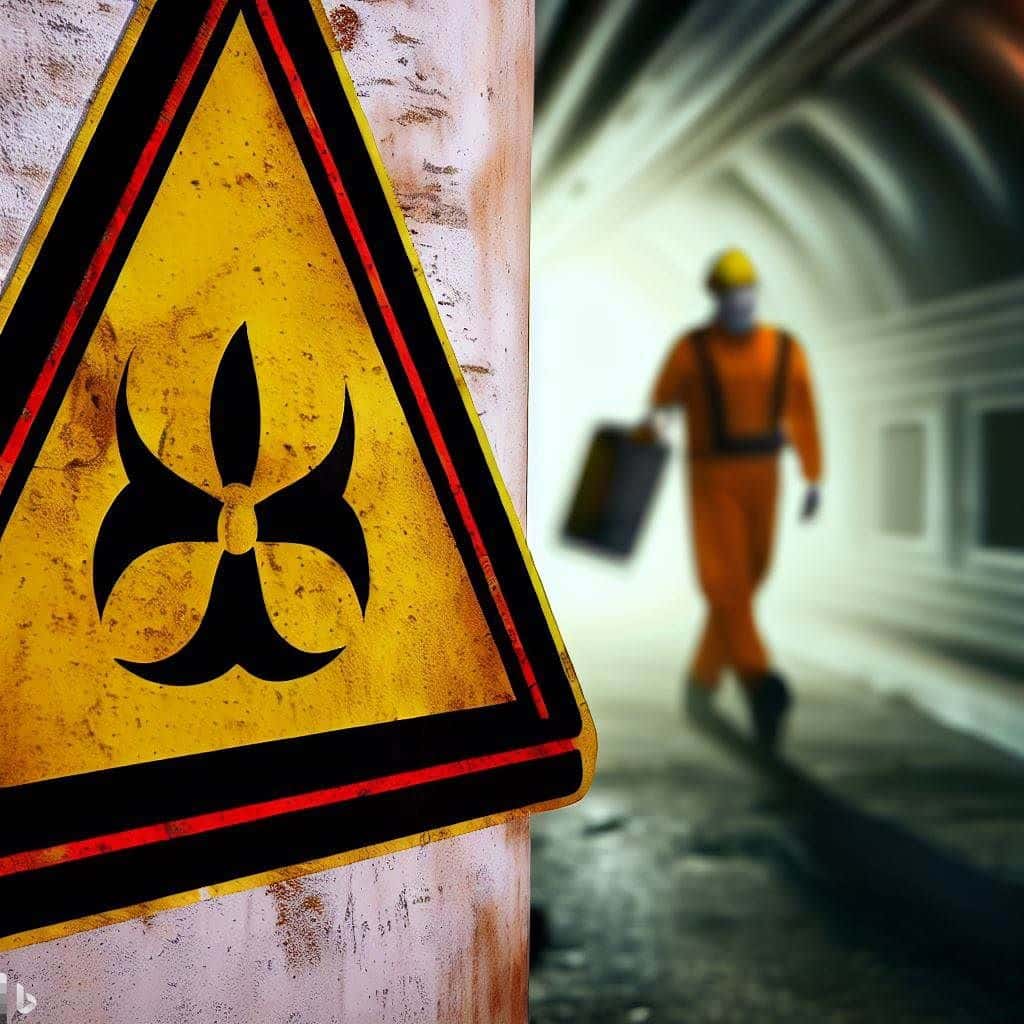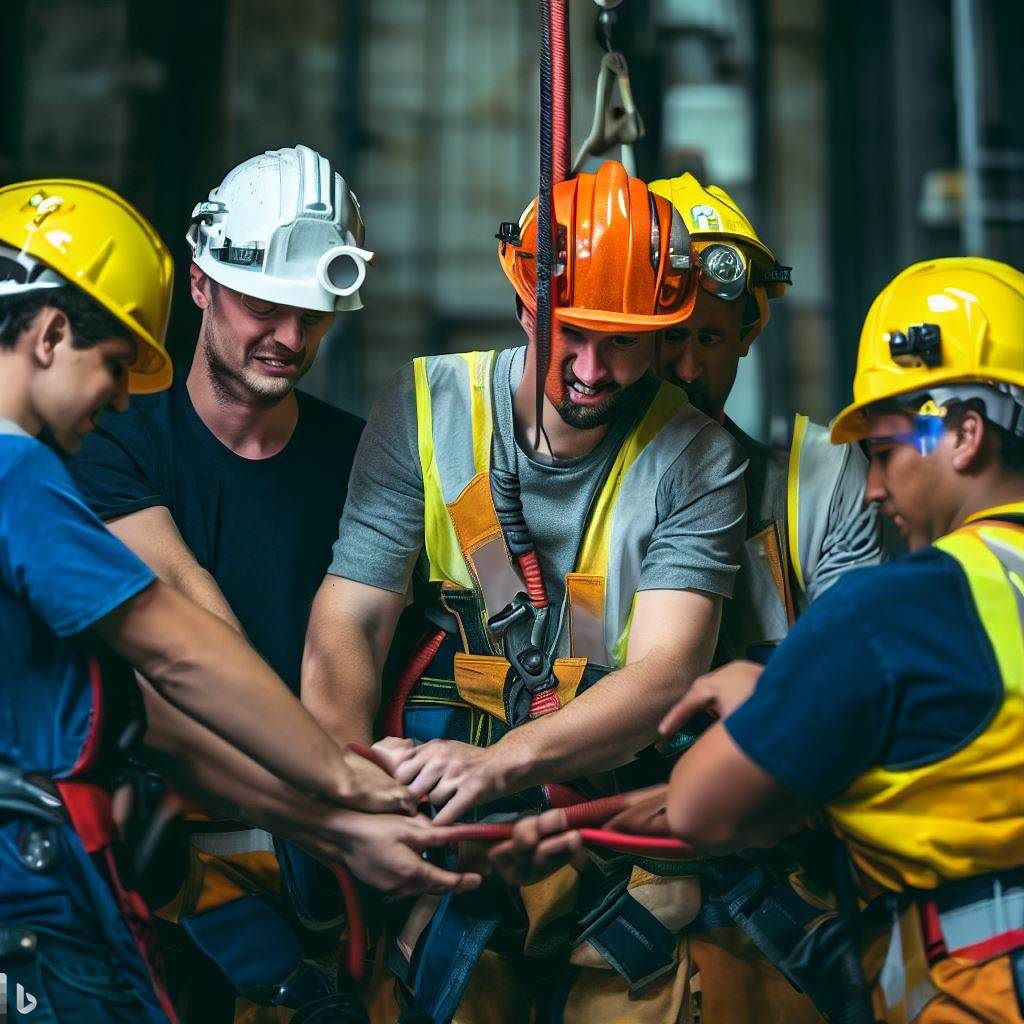Understanding the Risks: An In-Depth Analysis of Confined Space Deaths and How to Avoid Them
Confined space deaths are an unfortunate reality faced by many industries, and understanding the risks associated with working in confined spaces is essential to maintaining a safe working environment. This article will delve deep into confined space deaths, discussing the dangers of confined spaces, the common causes behind these fatalities, and the regulations to protect workers.
We will also explore preventative measures and best practices for avoiding such tragedies. By the end of this piece, you should have a comprehensive understanding of the risks associated with confined space deaths and how to avoid them.
Defining Confined Spaces and Their Dangers
What is a Confined Space?
A confined space is an enclosed or partially enclosed area not designed for continuous human occupancy and has limited access to entry and exit. Examples of confined spaces include storage tanks, silos, pits, tunnels, pipelines, and sewers. These spaces can pose significant hazards to workers, as they often have poor ventilation and limited visibility and can contain hazardous substances.
The Dangers of Confined Spaces
Confined spaces can present various dangers to workers, including:
- Atmospheric Hazards: Confined spaces often have poor ventilation, which can lead to a buildup of toxic gases, fumes, or vapors. These hazardous atmospheres can result in asphyxiation, poisoning, or explosions.
- Engulfment: Workers in confined spaces can become engulfed by loose materials like sand, soil, or grain, which can quickly bury and suffocate them.
- Falls: Confined spaces may have limited visibility and uneven surfaces, increasing the risk of falls and injuries.
- Entrapment: The narrow entry and exit points of confined spaces can lead to entrapment and difficulty escaping in an emergency.
- Heat Stress: Confined spaces with high temperatures can cause heat stress and dehydration, leading to serious health complications or death.

Common Causes of Confined Space Deaths
Atmospheric Hazards
One of the most common causes of confined space deaths is the presence of hazardous atmospheres. Oxygen deficiency, toxic gases, and flammable vapors can all lead to fatal incidents. Oxygen-deficient atmospheres can cause disorientation, unconsciousness, or even death.
Poisonous gases like carbon monoxide, hydrogen sulfide, and ammonia can cause respiratory distress, poisoning, and fatalities. Flammable vapors can ignite and cause explosions, leading to severe burns or death.
Engulfment and Falls
Engulfment and falls are other common causes of confined space deaths. Engulfment can occur when workers are engulfed by loose materials, such as sand, soil, or grain, leading to suffocation and death. Falls can happen due to limited visibility, uneven surfaces, or slippery conditions, causing severe injuries or fatalities.
Mechanical Hazards
Confined spaces may also contain mechanical hazards, such as moving parts, rotating equipment, or energized electrical systems. Workers can become entangled, crushed, or electrocuted by these hazards, resulting in severe injuries or fatalities.
Case Studies of Confined Space Fatalities
Case Study 1: Oxygen Deficiency
In 2016, three construction workers in Florida died while working in a manhole. The victims were overcome by an oxygen-deficient atmosphere and lost consciousness. Despite rescue attempts, all three workers perished. The investigation revealed that the manhole had not been tested for atmospheric hazards before the workers entered, and no proper safety equipment was provided.
Case Study 2: Toxic Gas Exposure
In 2014, a worker in Texas died after being exposed to hydrogen sulfide gas in a confined space. The victim worked in a wastewater treatment facility when he entered a confined space without proper ventilation or protective equipment. The toxic gas exposure caused respiratory distress and, ultimately, death.
Case Study 3: Engulfment
In 2013, two workers in Illinois were killed when they were engulfed by corn in a grain bin. The victims were attempting to break up a bridge of grain when the material suddenly collapsed, burying them alive. The confined space and the engulfment hazards were not properly assessed, and no safety procedures were in place.
Regulations and Standards for Confined Space Safety
OSHA Regulations
In the United States, the Occupational Safety and Health Administration (OSHA) enforces regulations for confined space safety. OSHA’s confined space standard, 29 CFR 1910.146, outlines the requirements for employers to protect workers from confined space hazards. This standard requires employers to:
- Identify and evaluate confined spaces in the workplace.
- Implement a written confined space entry program.
- Provide appropriate training for workers and supervisors.
- Test and monitor the atmosphere in confined spaces before and during entry.
- Use proper protective equipment and ventilation.
- Establish rescue procedures and ensure that rescue personnel are properly trained and equipped.
International Standards
In addition to OSHA regulations, other countries have adopted similar standards for confined space safety. For example, the European Union has Directive 89/655/EEC on the minimum safety and health requirements for using work equipment, including confined space safety provisions. Similarly, Canada has the Canadian Standards Association (CSA) Standard Z1006, which covers work management in confined spaces.
Identifying and Assessing Confined Space Risks
Identifying Confined Spaces
Employers and workers must first identify confined spaces to manage confined space risks effectively. This can be done by thoroughly inspecting and evaluating the work area, considering size, shape, accessibility, and potential hazards.
Assessing Hazards
Once confined spaces have been identified, employers must assess the potential hazards associated with each space. This includes evaluating atmospheric hazards, engulfment risks, fall hazards, and mechanical hazards. This information should be used to develop a written confined space entry program outlining the procedures and precautions necessary for safe entry and work in confined spaces.
Preventative Measures to Avoid Confined Space Deaths
Pre-Entry Procedures
Before entering a confined space, workers should:
- Obtain proper authorization and permits.
- Test and monitor the atmosphere for hazardous conditions.
- Use proper ventilation to maintain a safe atmosphere.
- Ensure all energy sources are isolated, locked out, and tagged.
- Wear appropriate personal protective equipment (PPE).
Safe Work Practices
While working in confined spaces, workers should:
- Maintain communication with an attendant outside the confined space.
- Continuously monitor the atmosphere for changes in conditions.
- Use non-sparking tools and equipment to prevent the ignition of flammable vapors.
- Follow established procedures for working with hazardous materials.
- Avoid overexertion and heat stress by taking regular breaks and staying hydrated.
Training and Education for Confined Space Safety
Worker Training
Employers must provide training for all workers who may be required to work in confined spaces. This training should cover the following:
- The hazards and risks associated with confined spaces.
- The proper use of PPE and ventilation equipment.
- The importance of atmospheric testing and monitoring.
- Safe work practices and emergency procedures.
- Rescue techniques and first aid.
Supervisor Training
In addition to worker training, supervisors should also receive training on managing confined space work. This includes understanding the regulatory requirements, developing a written confined space entry program, and ensuring workers follow established procedures and precautions.

Emergency Response and Rescue in Confined Spaces
Planning for Emergencies
Employers must establish emergency response and rescue procedures for confined space incidents. This includes:
- Identifying potential emergency scenarios and developing appropriate response plans.
- Ensuring that rescue personnel are properly trained and equipped.
- Conducting regular drills and exercises to test the effectiveness of rescue procedures.
Non-Entry Rescue Techniques
Non-entry rescue techniques should be used whenever possible to retrieve workers from confined spaces. This can include retrieval systems, such as tripods and winches, as well as remote communication and monitoring devices.
Conclusion and the Importance of Confined Space Awareness
Confined space deaths are a tragic consequence of inadequate safety measures and a lack of understanding of the risks associated with working in confined spaces. Identifying and assessing confined space risks, implementing proper safety procedures, and providing appropriate training and education.
Employers and workers can significantly reduce the likelihood of these tragic incidents. Everyone involved in a confined space must remain vigilant and committed to maintaining a safe working environment, ensuring all workers return home safely at the end of each day.
Frequently Asked Questions
Q: What is a confined space?
A: A confined space is an enclosed or partially enclosed area not designed for continuous human occupancy and has limited access to entry and exit.
Q: What are the common causes of confined space deaths?
A: Common causes of confined space deaths include hazardous atmospheres, engulfment, falls, and mechanical hazards.
Q: What regulations and standards exist for confined space safety?
A: In the United States, OSHA enforces regulations for confined space safety, such as the confined space standard, 29 CFR 1910.146. Other countries have adopted similar measures, such as the European Union’s Directive 89/655/EEC and Canada’s CSA Standard Z1006.
Q: How can confined space deaths be prevented?
A: Confined space deaths can be prevented by identifying and assessing confined space risks, implementing proper safety procedures, and providing appropriate training and education for workers and supervisors.
Q: What is the importance of emergency response and rescue in confined spaces?
A: Emergency response and rescue are critical in confined spaces, as prompt and effective action can mean the difference between life and death for workers trapped or injured in these hazardous environments.
